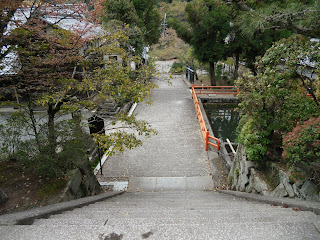
The last post of this blog is about the ethnographical issues in a castle town in Japan.
The first image is a brief map of Ko-riyama castle town. There are several blocks named their industries. (車町 is car area/ 豆腐町 is tohu area). In the past, this area is flowrished for those commercial activities.


the picture 2 and 3 are the vacant lot where the castle used to be
From here is what I had already known about Japanese lives in a castle town of Ko-reyama.
However, one of the visual blog about Japanese red-light destrict changed my images and knowledge about historical Japanese ethnographical issues.

Before the arrival of Christians, Japan had the culture of prostitution. Many people (mainly upper class such as a lord, priest and the rich) went to red-light area and enjoyed their night spending with women called “Geisya”. However, after the European culture came into Japan, those activities which were against Christianity were forbidden. Moreover, after the Second World War, GHQ banned and rejected those cultures.
However, some of the places still maintain those culture by changing their commercial styles into the way which do not offend legal issues.
Those places run as Japanese style hotel or small restaurant, and they have prostitutes in front of the entrance. Typically the customer and the prostitutes go into the room in second floor, and they enjoy the time. The owners are supposed to be ignorance of their activities, because if they interfere those activities, it is against the law.
This is the process of Japanese Geisya playing today.
Note: I took the ko-reyama district because it is already out of vague.
If you take pictures in active district, it must be dangerous for any people.
Here is brief summary of Ko-reyama red-light district.
There are two places of red-light district, Tousenji area and Okamati area.
The last picture is taken in Tousenji area. At the 1989, Nara police and Osaka police attacks those area (at that time, some of the crime groups force the Philippine women work as prostitutes ) and now there are only buildings.
If you have interest in those historical ethnographic places, I recommend you to visit Tousenji area. (I do not recommend you to take pictures in Okamati area, because there is a gangster’s office)
here is some links about Japanese red-light areas
http://www7a.biglobe.ne.jp/~masayuki/akasenatosanpo.html
http://nakkacho.ninja-web.net/16hashimoto/hashi_01.htm (There were red-light area around Hirakata Park)






















